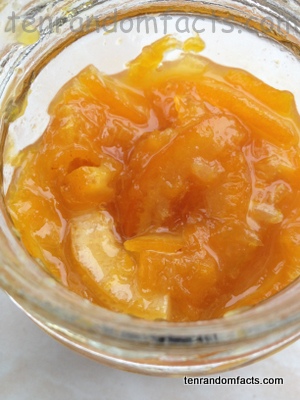No slice of toast for breakfast is complete without marmalade.
- Marmalade is a special citrus jam that is made from the peel and juices of citrus fruit, as well as sugar and water.
- The word ‘marmalade’ comes from the Portuguese word ‘marmelada’, which means ‘quince jam’.
- Marmalade has been the most popular among the British, but in recent years it has seen a decline in sales, due to the younger generation favouring other spreads and breakfast options.
- In the 1500s, the use of the term ‘marmalade’ became a common term for jam or fruit preserves, not just quince or citrus jam, and depending on the country you live in, ‘marmalade’ today, can be a reference to only citrus preserves, or it can be a broad term for any fruit jams.
- Preserves have been made for hundreds of years, and by the 1400s, quince pastes (like thick jam) were being made, and were known as ‘marmalade’.
- Scottish Janet Keiller of Dundee city made a jam out of oranges, most likely adapting a quince recipe, and commercialised the marmalade in the late 1700s.
- Marmalade is popularly used as a spread on toast or bread, commonly at breakfast.
- Marmalade often has a tangy taste, particularly when using tangier oranges such as the traditionally used, Seville oranges.
- It is said that marmalade was originally a type of sweet, and that it was beneficial for digestive issues.
- Marmalade is typically orange in colour, but it can be red, brown or many other colours, depending on the fruit used, the length of time cooked, and the ingredients included.
Bibliography:
Marmalade, 2013, Wikipedia, http://en.wikipedia.org/wiki/Marmalade
Marmalade: A preserve we must preserve, 2010, The Telegraph, http://www.telegraph.co.uk/foodanddrink/7175487/Marmalade-a-preserve-we-must-preserve.html







